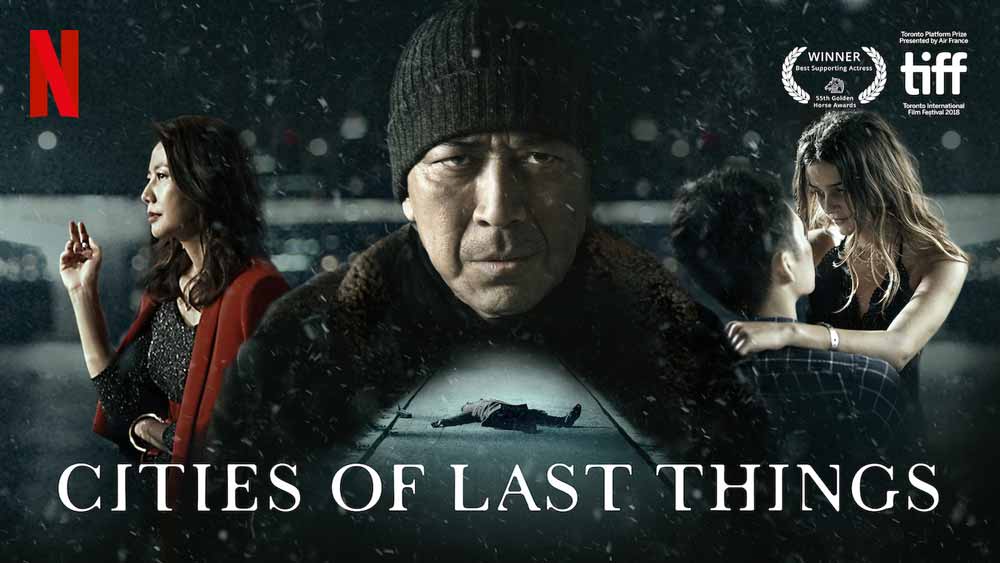Summary
Taiwanese Netflix film Cities of Last Things establishes its commitment from the very first scene, providing a compelling, depressing dystopian story.
Like Blade Runner, Taiwanese Netflix film Cities of Last Things disconnects the characters from the audience. The protagonist does not attempt to allow the audience to be part of their story. It’s his story, and we are required to watch it unfold in its depressive state. There’s no compromise.
Cities of Last Things is a dystopian story following the mundane life of a man from three different eras in the same city in one night. The character has taken it upon himself to get revenge of those who have wronged him decades ago, and from his lowest point, the eras go in reverse chronological order. It’s depressingly appealing; in the first scene we are looking up above at a tall building, waiting with bated breath, then suddenly a man falls from the sky to his death.
The direction of Cities of Last Things is admirable. Patient work has been put into articulating each scene. The main character is not designed to be attractive; he is surprisingly normal. His average persona makes the story feel more regretful of the events he experiences. Director Wi Ding Ho wrote the script with a purpose in mind; the protagonist is a nobody – quickly squashed by the dangers of nightlife – discarded quite easily by those he involves himself with. His reserved, normal personality is somehow made more appealing.
Netflix film Cities of Last Things is markedly one-sided in the emotions it gauges with the audience. After the halfway mark, there is no expectation of feeling any happiness or any other feeling for that matter. The Taiwanese film understands a gloomy reality that can bestow millions of people — the story is encased depression.
Boiling beneath the impressive shots from the director is the success of the performances; the lead protagonist is obviously a different age in each era, but each actor manages to replicate his personality impressively. His acquaintances that have a specific effect on him are equally as applaudable in performances. There are little words said in some scenes, but that’s where the power in the script and direction come from. Cities of Last Things appreciates space.
The one criticism that can be attached to Cities of Last Things is how long it spends in the depressive nature. There is no clear end goal for the character; it’s a case study. By the halfway mark the Netflix film does resign itself to the concept slightly too heavy. You notice the time, and the urge to check your smartphone. Cities of Last Things could have benefitted from being 15 minutes shorter to become more impactful.
Taiwanese Netflix film Cities of Last Things is one of the standout films on the platform this year, which is a great torch to hold. There have not been many brilliantly made films released on the streaming platform this year.




